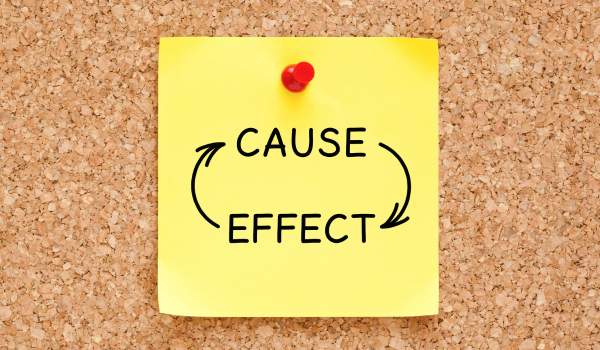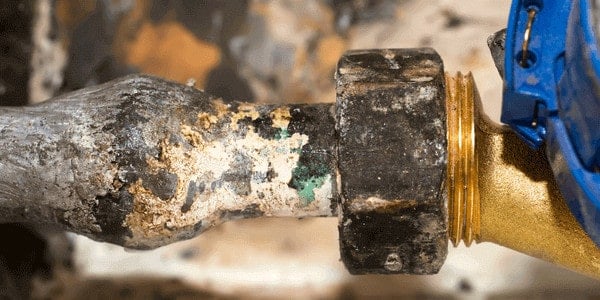If you think lead in tap water is a thing of the past, think again.
Aging pipes, old fixtures, and forgotten service lines are still quietly putting families at risk — sometimes with no warning signs at all.
The good news? Testing your water is easier (and faster) than ever. And if lead shows up, there are affordable ways to fix it for good.
Let’s break it down — one step at a time. 🧠
🧠 Quick Takeaways:
- ✅ Lead Is Invisible — You can’t see, taste, or smell it in tap water.
- ✅ Old Plumbing Is a Big Clue — Homes built before 1986 are most at risk.
- ✅ Children and Pregnant Women Are Most Vulnerable — Even tiny amounts matter.
- ✅ Filtration Systems Work — Reverse osmosis, carbon, and KDF filters all remove lead.
- ✅ Testing Is Step One — Lab kits give the clearest picture of what’s really in your water.
💧 How Lead Contaminates Drinking Water

It’s not usually the water source that’s the problem — it’s what the water touches on the way to your faucet.
Aging pipes, corroded fixtures, and old service lines can all quietly leach lead into your tap water without changing its taste, color, or smell.
Let’s break down the biggest culprits:
| 🔍 Source | ⚡ How It Causes Lead Contamination |
|---|---|
| 🏚️ Old Lead Service Lines | Lead pipes from the water main to your house can slowly leach lead, especially if the water chemistry isn’t properly treated. |
| 🔩 Lead Solder in Plumbing | Homes built before 1986 often used lead-based solder to join copper pipes, a hidden risk inside walls. |
| 🚰 Brass Fixtures and Faucets | Even “lead-free” faucets made before 2014 could legally contain up to 8% lead by weight. |
| 💧 Corrosion Issues | Water that’s too acidic (low pH) can corrode pipes and release more lead into your water supply. |
| 🏡 Private Wells | Older wells may have brass components or seals that contain lead, especially pumps over 20 years old. |
💬 Quick Tip: Even if your city water tests clean at the source, lead can sneak in through your home’s plumbing system before it ever reaches your tap. That’s why testing your actual tap water matters more than just checking the city’s reports.
🚨 Signs You Might Have Lead in Water

Here’s the tricky (and frustrating) part — lead gives you no warning signs.
It doesn’t change the way your water looks, smells, or tastes. You could drink it every day without realizing it’s there.
Still, there are a few red flags that can hint at bigger risks:
✅ Common Signs to Watch For:
- 🚰 Metallic Taste – Bitter, metallic flavors could suggest corrosion in old pipes.
- 🧼 Discoloration After Sitting – Water that turns slightly brown, yellow, or rusty after sitting in pipes overnight can indicate corrosion (not always lead, but worth testing).
- 🧽 Visible Pipe Corrosion – Green-blue stains around fixtures, leaks, or on old pipes often signal corrosion issues.
- 🧹 Sediment or Grit in Tap Water – Small flakes or particles in water could be signs of pipe decay.
- 👶 Health Symptoms Without Obvious Cause – Recurrent fatigue, stomach issues, or developmental delays in children can sometimes be linked to chronic low-level lead exposure.
💬 Good to Know: These signs don’t guarantee there’s lead — but if you notice any of them, it’s smart to test your water and find out for sure.
🧠 Who’s Most at Risk from Lead Poisoning?

While lead can affect anyone, some groups are especially vulnerable — and the damage can be much more severe.
Here’s who needs to be extra cautious:
✅ Groups Most at Risk:
- 👶 Young Children (Under 6) – Their bodies absorb lead faster, and it can seriously impact brain development.
- 🤰 Pregnant Women – Lead can cross the placenta and harm the baby’s developing brain and nervous system.
- 🧓 Older Adults – Lead exposure over time can worsen high blood pressure, kidney damage, and cognitive decline.
- 🐾 Pets – Cats and dogs can also suffer from lead poisoning symptoms like vomiting, seizures, and loss of appetite.
💬 Good to Know: Even small amounts of lead can quietly build up over time — so even if you’re healthy now, it’s smart to act early if you live in an older home or suspect any risks.
🛡️ How to Know if You’re at Risk

Worried you might have hidden lead pipes or fixtures? You’re not alone — millions of American homes are still dealing with old materials.
Here’s how to quickly assess your risk:
✅ Signs You Might Have Lead Plumbing:
- 🏚️ Your Home Was Built Before 1986 – Older construction is the #1 risk factor.
- 🚰 You See Dull Gray Pipes – Especially if they’re soft and non-magnetic.
- 🧲 Pipes Fail the Magnet Test – Lead pipes won’t attract a magnet like steel.
- 🛠️ No Plumbing Upgrades – If your pipes, fixtures, or service line haven’t been replaced recently, it’s worth checking.
- 🛗 Well Systems Over 20 Years Old – Old seals and pumps can leach lead into private wells.
💬 Good to Know: Still not sure? Contact your local water department — they often have historical records showing whether your service line was made of lead.
Programs under the Safe Drinking Water Act aim to help, but upgrades can take decades.
🚿 How to Lower Lead Exposure Fast
If you’ve spotted warning signs — or just want to be proactive — the good news is, you can take action today.
Here’s what the experts recommend:
✅ Steps to Cut Down Lead Risk:
- 💧 Test Your Water Regularly – Catch small problems before they become big ones.
- 🥶 Use Cold Water for Drinking & Cooking – Hot water pulls more lead from pipes.
- 🚿 Flush Taps Daily – Let the water run for 1–2 minutes each morning.
- 🛠️ Clean Faucet Aerators – Tiny lead particles can collect in screens over time.
- 🍼 Use Bottled Water for Babies – Infants are extra sensitive to even small amounts.
💬 Pro Tip: Testing showed high lead levels? Installing a filtration system is the safest long-term fix — way cheaper (and greener) than switching to bottled water.
🚿 Water Filters That Actually Work Against Lead

When it comes to lead, not just any water filter will do. You want something certified, proven, and strong enough to knock that number as close to zero as possible.
Here’s a quick snapshot of your best options:
| Filter Type | 🏠 Best For | ⚡ Strengths |
|---|---|---|
| 💧 Reverse Osmosis (RO) | Under-sink drinking water | Removes 99%+ of lead and other heavy metals |
| 🛀 Solid Carbon Block Filters | Faucet, pitcher, or countertop units | Affordable, easy to install, targets lead + chlorine |
| 🔥 Distillation Systems | Countertop small-batch water production | Removes nearly all contaminants including lead |
| 🛡️ KDF + Carbon Combo Filters | Whole-house protection | Reduces lead, chlorine, and bacteria throughout your home |
💬 Good to Know: Choosing a filter isn’t just about slapping something onto your sink. It’s about picking a system that’s certified to remove lead — preferably under NSF Standard 53 or NSF Standard 58.
(If you want our full breakdown on top lead-filter systems, check out our lead removal filter roundup.)
🧼 Final Thoughts
Lead contamination isn’t something you can see or smell — but ignoring it can come at a heavy cost.
Even tiny traces of lead can quietly chip away at health over time. Kids, pregnant women, and vulnerable adults are especially at risk. (see CDC guide on lead poisoning)
Testing is your first line of defense. Filtering is your best long-term solution.
From faucet filters to serious whole-house systems, there’s a way for every home and every budget to stay protected.
🛡️ Clean, safe water shouldn’t be a gamble — and now you know exactly how to tip the odds in your favor. 💧✨
 143 people found this helpful. Was this guide helpful to you?
143 people found this helpful. Was this guide helpful to you? 


